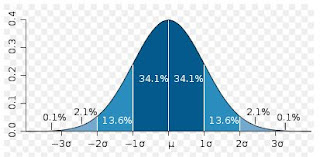 With all the usual reservations, the Disease Management Care Blog basically buys into the prevailing Dartmouth Atlas belief that the United States has a problem with both over and underutilization of health care services. So do the Feds. For years, Washington has been pursuing areas of underutilization, for example, with programs to reduce disparities and support critical access hospitals. And thanks to the insights of Dartmouth Atlas, overutilization is now being tackled with programs that, for example, bundle payments and deny coverage of unnecessary services.
With all the usual reservations, the Disease Management Care Blog basically buys into the prevailing Dartmouth Atlas belief that the United States has a problem with both over and underutilization of health care services. So do the Feds. For years, Washington has been pursuing areas of underutilization, for example, with programs to reduce disparities and support critical access hospitals. And thanks to the insights of Dartmouth Atlas, overutilization is now being tackled with programs that, for example, bundle payments and deny coverage of unnecessary services.Both approaches, however, can be criticized because they're all about "chasing the tails." Whenever any performance data are arrayed from high to low, they'll generally follow a Gaussian Distribution. Most hospitals, physicians and other service providers generally cluster around an average, with both high and low outliers at either ends of the curve. In thinking about this, the actions of the Federal government described above are all about attacking the extremes of the curve, i.e., the outliers.
All well and good, says the DMCB, but it prefers care approaches that address the entire curve, since that approach benefits everyone. Low end critical access programs and high end bundled payments aren't really going to do much for persons with satisfactory access to hospitals with middlin' levels of utilization. The patients in the middle deserve better.
Which is one of the reasons why the DMCB likes population-based care and disease management. When credentialled non-physicians start coaching patients, the entire curve can shift in the right direction and the outliers move toward the middle. The DMCB hasn't seen much published on this specific topic, but when it conducted an in-house analysis on the impact of disease management some time ago, that's precisely what it found.
How could this work? In a diabetes population, persons on the "low end" who haven't had an appointment with a provider would be prompted to do so and directed to the nearest clinic with access to care. Persons on the "high end" who are on multiple medications and who are seeing multiple providers could be directed to a primary care provider. In the meantime, patients and providers in the middle would be prompted to foll0w cost-effective and high quality clinical guidelines.
Problem solved.
By the way, the DMCB thinks this is an under recognized benefit of the Patient Centered Medical Home (PCMH).
If any readers are aware of any peer review or in house studies that examine this phenomenon, please share.












3 comments:
Seems that all large studies are necessarily "commercial disease management" and don't work. See, e.g., "2008: A Tipping Point for Disease Management" in Journal of Managed Care Pharmacy Vol 14 No 7. Smaller, local initiatives seem to work better but less interesting in the "marketplace of ideas" looking for scalable turnkey solutions.
The article was reviewed by the DMCB long ago - see:
http://diseasemanagementcareblog.blogspot.com/2008/09/five-ugies-of-disease-management.html
There are other studies that show it DOES work. What's more, the DM industry has evolved considerably.
The DMCB concluded that that was thanks to two features of the research trial: 1) free drugs, and 2) a nurse devoted to making sure people took their free drugs.
Post a Comment